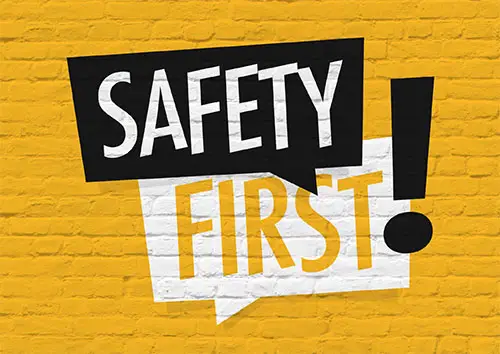Contents
Walk Before You Run
I think we can all agree that you have to learn to walk before you run with most things in life.
It’s important to learn the basics before trying to move on to something that’s more advanced. While the meaning is usually figurative, it’s also quite literal.
You seriously need to learn to walk before you run. I imagine you’re scoffing at the statement thinking: “I know how to walk just fine.”
However, there’s more to walking than just putting one foot in front of the other – especially when we’re talking in terms of exercise.
For the most part I’ve always been an athletic individual and remained in decent shape.
But it seems that even at my peak fitness level, running was difficult. I was so convinced that just because I was in shape and active that running would be a breeze.
The rules didn’t apply to me! I didn’t need to walk before I ran.
So, I dove head first into a run that ended up in me walking a majority of the route.

After that encounter, I took a few steps back – literally! I began walking four times a week, every morning for about 30 to 45 minutes.
One thing that really helped me was finding a podcast to tune into during each walk. It may not seem like much, but it definitely helped me keep walking.
There were even times I prolonged the walk because I was so tuned into the podcast.
Eventually I began to pick up the pace and was shocked at how much easier it was to run compared to when I first began.
Needless to say, there is a learning curve when it comes to running.
It might seem like an easy form of cardio but it’s important to get the basics down and walk before you run.
And while you might think that running is child’s play, it has become a highly favored form of physical activity for many people.
In fact, according to the CDC, more than 145 million adults now include walking as part of their physically active lifestyle.
Here are a few more facts from the CDC regarding physical activity and walking:
- Performing physical activity regularly helps people get and maintain a healthy weight.
- Adults who are inactive are at a higher risk for early death, heart disease, stroke, type 2 diabetes, depression and some forms of cancer.
- More than 6 in 10 people walk for fun, relaxation or exercise.
- It is recommended that adults get between at least 2 and 2.5 hours of physical activity a week.
Whether you’re just starting out on your physical fitness journey or are a seasoned fanatic, learning to walk before you run is crucial. The good news is that you are getting active and taking steps to a healthier lifestyle.
Here are a few things to take into consideration when it comes to learning to walk before you run:
Safety
First and foremost, safety is of utmost importance. You should consult with your doctor before beginning any new training program.
But this is especially true for individuals who are unsure of their health status, those who haven’t worked out in awhile or those who suffer from conditions such as: heart disease, asthma, high blood pressure or diabetes.
It’s always better to be safe than sorry, even if it seems that you’re being “overly cautious.”
Without speaking to a doctor first you could be putting yourself at risk.
So, before beginning to walk before you run, I highly suggest consulting with your doctor just to make sure there’s no underlying conditions you could be suffering from.
Your doctor will be able to perform any tests that may be needed and they can also help determine what amount of exercise is best for you.
In addition to making sure you’re healthy, there’s some safety precautions to consider when going walking or running:
- Always walk on the sidewalk. In areas where there are no sidewalks, walk facing oncoming traffic.
- Try to avoid going for walks or runs after dark. If you do go once it’s dark remember to wear reflective gear and try to stay on well-lit streets.
- Be sure to let someone know when you’re going, where you’re going and an estimated time that you will be back.
- If you have trouble any of the above, try walking or running inside on a treadmill. Walking or running on a treadmill is a lot safer if you don’t have sidewalks or well-lit streets.
Patience is a Virtue

Be patient with yourself during the process.
I understand you’re probably feeling really motivated to get out and go for a run. I’ve been there!
But I can’t stress the importance of walking before diving head first into a run.
Once you’ve been walking for a while, running will come much more easily. Remember – you have learn to walk before you run.
For now, forget about running and start with walking.
Like the saying goes: slow and steady wins the race, if you go too fast you might make a mistake. Don’t try to rush through the beginning steps.
Take things in stride (see what I did there?) and be patient with each part of the process that gets you to the final result.
Start Walking
So, now is the time to start walking. It may be beneficial to invest in a good pair of walking shoes.
Plus, a new pair of shoes might help increase your motivation!
Try to focus on having a good walking technique that utilizes proper posture, use of arms and leg motion. Here’s a few fitness walking techniques:
- Always keep your head up and look forward.
- Your shoulders should remain back and relaxed.
- Pretend there is an imaginary line in front of you and try to place your feet there with each step.
- One foot should always remain on the ground and you should focus on quicker strides instead of longer ones.
- Add in your arms to make the walk a full body exercise. It has been found that this increases calorie burn 5 to 10%.
It’s important to set realistic goals and be proud of yourself after each walk.
If you are just starting out, practice consistency because it is key.
Get into the habit of going for a walk a few times a week to make it second nature and something that becomes easier to do each time.
Remember – you have learn to walk before you run. Here’s a bit more advice for getting started with walking:
Warming Up

Always start by warming up first. Starting with a warm up gives your body temperature and heart rate an easy start, as opposed to taking off full throttle.
In addition, warming up will increase muscle temperature which causes muscles to become less injury prone.
The last thing you want to do is injure yourself on the first try!
Your warm up should only take about five minutes of your time and is imperative for getting your body properly prepared.
Your warm up may include: leg swings, arm circles or stretches. Try to perform each warm up routine for a minimum of 30 seconds.
Walking for Beginners
If you’re just starting out, it’s recommended that you aim toward walking between 3 to 3.5 miles per hour for ten minutes a day for the first three weeks.
With a 3 to 3.5 mph pace, you should walk between a 17 to 20 minute mile. As this starts to become easier, increase your pace and the amount of time you walk.
Walking for Intermediate
If you’re in pretty good shape then you can probably start off with a 3.5 to 4.5 mile per hour pace.
This would have you walking a mile anywhere from 13 to 17 minutes. It’s suggested that you walk three miles, 3-5 times each week.
If you’re struggling with a quicker pace, then just increase the amount of time you walk instead.
Walking for Advanced
As you become more advanced then it’s time to start increasing the intensity of your walks.
Start going for walks uphill and downhill or add stair climbing to your workout. In addition, you could always carry hand weights to help add intensity.

Tips to Make Walking Fun
Whether you’re just beginning, more intermediate or a seasoned aerobic exerciser, everyone struggles with motivation at times.
There are just some days that are harder to peel yourself off the couch and turn off that Netflix series you’re dying to binge watch.
During those days where you just can’t seem to find the drive to walk before you run, try to make it more fun by: taking the dog, walking to your local grocery store or by having your partner walk with you.
You can even watch that Netflix series while walking inside on a treadmill!
Start Running
So, you’ve gone from the beginning stages of walking and have worked your way through the steps of intermediate to advanced.
This means it’s time to start running! But of course, you have to walk before you run.
Start with a brisk, five minute walk and follow it up with a few calf and hamstring stretches.
Yes stretching is still important, if not more important, when you’re going on a run!
So, be sure to carve out an additional three to five minutes dedicated to stretching.

Once you’ve gotten a good stretch in and your body feels warmed up, start running.
You can start by running for one minute and then walking for two minutes. This is known as a 1:2 ratio.
If a 1:2 running ratio comes fairly simple to you, increase the ratio to a 2:2. On the contrary, if this a 1:2 ratio is too much for you then change it to a 1:3.
This means you will run for one minute and walk for three. Eventually, you may not need to walk at all except to warm up and cool down!
It’s important to set a reasonable goal and work towards it every time you go running.
When first starting, you may aim to successfully complete 20 minutes of exercise. As you advance, that time may increase to 30 or 45 minutes.
Of course, there may be days where you struggle to run at all and that’s okay!
On these days, maybe shorten up your goal running time and increase your walk to run ratio. For instance, your goal exercise time could be 15 minutes with a 3:2 ratio.
So, you will run for three minutes and walk for two minutes. This ends up being a five minute cycle so it will only need to be completed three times!
Conclusion
Like was mentioned earlier, it’s important to learn the basics of most things in life before trying to move on to something that’s more advanced.
Running is no different. You have to learn to walk before you run. While this is figurative, it’s also quite literal.
You must exercise safety and caution with any physical activity.
This is especially true for individuals who are unsure of their health status, those who haven’t worked out in awhile or those who suffer from conditions such as: heart disease, asthma, high blood pressure or diabetes.
Be patient with your progress. Rome wasn’t built in a day.
You won’t be able to go out and run 5 miles without having had any recent training. You have to learn to walk before you run in order to be successful – and that will take time.
Start walking and be consistent. Aim to walk 3-5 times per week. Over time, try to increase increase the amount of time you walk, as well as your pace.
When you have worked your way to the advanced level of walking, you are ready to begin running.
Start by running for one minute then walking for two minutes (a ratio of 1:2). As running becomes easier, begin to increase the ratio to something like 2:2.
Begin to slowly increase the amount of time running while slowly decreasing the amount of time walking. Before you know it, learning to walk before you run will have paid off!!

